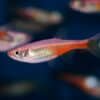To provide the best experiences, we use technologies like cookies to store and/or access device information. Consenting to these technologies will allow us to process data such as browsing behaviour or unique IDs on this site. Not consenting or withdrawing consent, may adversely affect certain features and functions.
The technical storage or access is strictly necessary for the legitimate purpose of enabling the use of a specific service explicitly requested by the subscriber or user, or for the sole purpose of carrying out the transmission of a communication over an electronic communications network.
The technical storage or access is necessary for the legitimate purpose of storing preferences that are not requested by the subscriber or user.
The technical storage or access that is used exclusively for statistical purposes.
The technical storage or access that is used exclusively for anonymous statistical purposes. Without a subpoena, voluntary compliance on the part of your Internet Service Provider, or additional records from a third party, information stored or retrieved for this purpose alone cannot usually be used to identify you.
The technical storage or access is required to create user profiles to send advertising, or to track the user on a website or across several websites for similar marketing purposes.















Rachel Turner (verified owner) –
I recently added a group of 6 Long-Finned Rosy Barbs to my 55-gallon community tank, and they have truly transformed my aquarium into a vibrant underwater paradise! These beautiful fish, with their flowing fins and stunning colors, thrive in a well-maintained environment, which I prioritize as a caring fish parent. After about two months of keeping them, I’ve seen them flourish, playfully swimming among the plants and really bringing life to the tank. They are peaceful and get along well with my other tropical fish, which adds to their charm.
I chose these over other barbs because I find their gracefulness and unique appearance to be unmatched. They’re active and social, often schooling together, which is a delight to watch. The only minor concern I’ve encountered is that they can be a bit nippy with slower-moving fish, so it’s important to keep that in mind when selecting tank mates.
Overall, if you’re looking for a lively and colorful addition to your aquarium, I highly recommend the Long-Finned Rosy Barbs. They’ve definitely brightened my fishkeeping experience, and I can’t wait to see how they continue to grow and thrive. Happy fishkeeping, everyone!